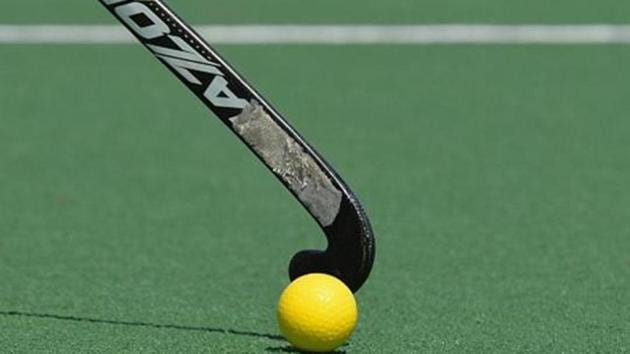Getting to the root of the hockey problem
Nine players from that squad graduated to the senior team for the 2018 World Cup, held in Bhubaneswar. The home team couldn’t go beyond the second round.
When India won the 2016 Hockey Junior World Cup in Lucknow’s newly built hockey arena, it was felt the title would finally help past masters of the sport turn the corner.

Nine players from that squad graduated to the senior team for the 2018 World Cup, held in Bhubaneswar. The home team couldn’t go beyond the second round.
At the Jakarta Asian Games in the same year, India failed to defend their title, settling for bronze instead. They did manage to win silver in successive editions of the Champions Trophy in 2016 and 2018 but consistency in top level tournaments was missing.
The reason for that could be the absence of a structured coaching programme at the grassroots, one mirroring the changing demands of international hockey. Putting one in place around 2010 helped Belgium, a country of only 1.15 crore people, become a powerhouse. They won silver in the 2016 Olympics and are the reigning men’s world champions.
Hockey India (HI) planned to put in place a programme and got David John back as High Performance Director in 2016. John, whose one-year stint had ended in 2012, was also given the responsibility of talent identification at the grassroots and bringing domestic coaches up to speed with requirements of modern hockey. But John became more involved with the senior team. Then John’s stint ended abruptly last August due to a health problem.
HI said it is uncertain when John’s replacement will be got. So will it need to rethink the grassroots programme? “The effect has only started to trickle down to grassroots level. Nothing can happen overnight. The implementation can’t be 100 per cent immediately. However things are on track,” said Elena Norman, Chief Executive Officer of HI.
Bridging the gap
Narrowing the gap between the core group of seniors and the development squad (junior team) has been HI’s priority for some years now. It has also chalked out a programme for a uniform coaching system in the country. “Because of diverse background of the players, a systematic coaching programme will help build a strong base. It will be easy to coach the national team as well,” said Jude Felix, the former international and coach.
Coaching, the same way
Around 650 coaches have already attended the HI Coaching Education Pathway started by John in early 2019. The federation believes it is on track to have all coaches under its wing. “We are aiming to bring 2000 coaches under the project within the next two years,” said Norman. “The course has been temporarily stopped and would start soon when the Covid-19 situation improves.”
HI has also identified minimum levels from the coaching pathway that will help put coaches with the right qualifications in the grassroots development programme. “We recommend minimum district teams are trained by a HI Level 1 certified coach while Level 2 certified coaches can train a state team,” said Norman.
The Level 1 and Level 2 coaching courses initiated by HI are of three days each. The fee for the first stage is ₹3,500, for the second level it is ₹6,000. The candidates take theoretical and practical tests.
To strengthen its foundation programme, HI, in coordination with Sports Authority of India (SAI), will set up six or seven hockey training centres once the Covid-19 situation improves, said Norman.
Stressing on the need for proper training in the formative years, Tushar Khandekar, a former assistant-coach of the senior men’s team in the 2016 Rio Olympics, said: “In the sub-junior category, the intensity of training could be less but if the format of play is similar to what top level players follow, we will have more quality players at the top.”
Khandekar said because of the muscle memory developed in the early stages, wrong technique is hard to get rid at 18 or 20. “Fundamentals like trapping, pushing and quick thinking inside the striking circle should be grasped during the development stage of 14 to 16. But it’s not happening.”
Former India skipper Pargat Singh runs an academy with 150 children in the age-group of eight to 17 in Mithapur near Jalandhar. The staff are in touch with the changes in the game, he said. “We also get top players like Mandeep Singh and skipper Manpreet Singh to spend some time with budding players when they aren’t travelling or attending the national camp.”
Singh said unless state units become proactive, “it will be difficult”. Easier said than done as the example of Uttarakhand shows. Uttarakhand has 15 to 20 coaches but none has updated their skills. “Coaches working in local schools and with the state government are paid low salaries, ranging between ₹10,000 to ₹20,000 per month. Some barely manage to make ends meet. Hence no one is interested in attending HI coaching courses,’’ said a coach from the state.
Players too don’t get a chance to polish their game. “There is a hockey turf in Dehradun but the state selection trials are conducted on grass fields. Each district is allowed limited players to participate in the trials. Thus interest is diminishing,’’ said another coach from Uttarakhand.
There are other problems too. MK Kaushik, the former India coach, said he once toured states like Chhattisgarh, Madhya Pradesh, Uttar Pradesh, Odisha, Jharkhand, Bihar and Uttarakhand. “I prepared a report and submitted it to the federation,” he said. It is not known what came of that report.






